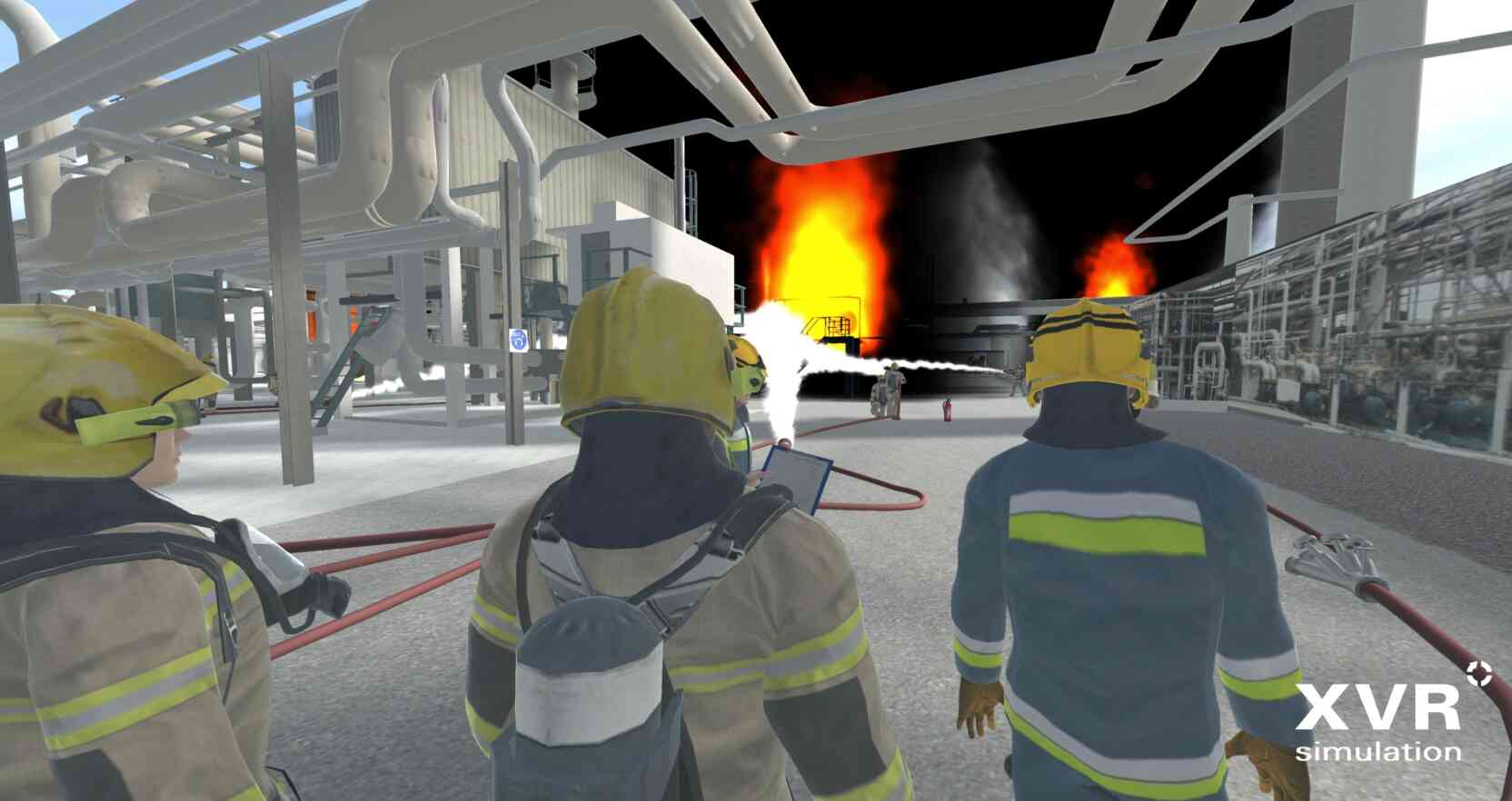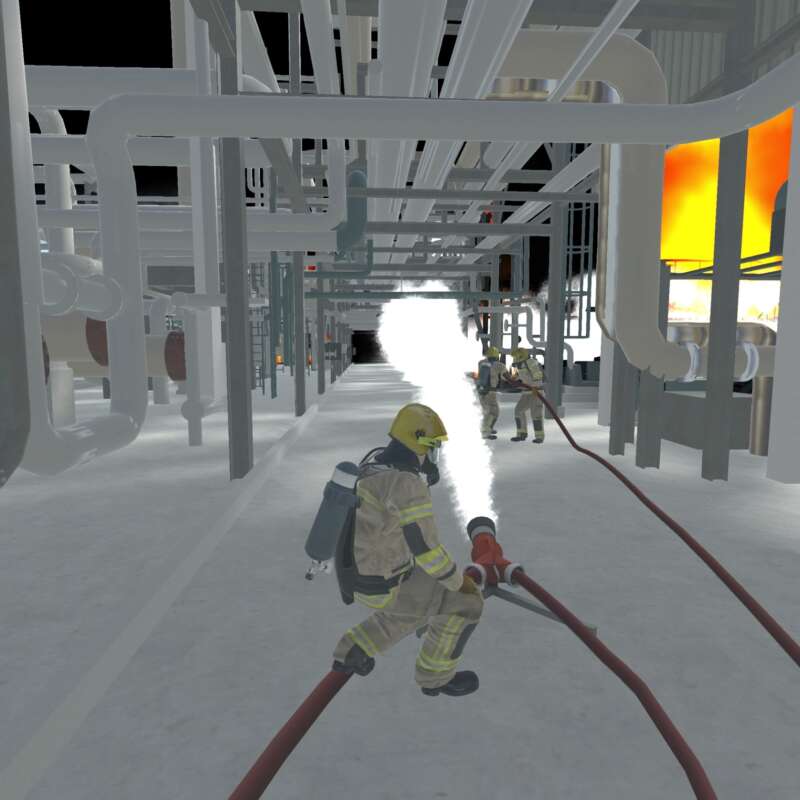


Training is becoming more and more important and the impact of effective training is felt across all areas of an organization. In Canada XVR has become the gold standard of virtual reality (VR) training for fire departments across the country. XVR might be best known for fire department training but now more and more industries are realizing how XVR can create an immersive learning environment and supplement existing training programs in their organizations.
I was fortunate to be able to sit down with Edwin van de snepscheut (Group Director of Customer Success) from XVR and talk to them about how the oil and gas industry has been using XVR.
Can you describe XVR and how it can help oil and gas companies?
Simply put XVR helps oil and gas companies improve their level of safe operation and avoid emergency accidents.
Any reputable oil and gas company has a policy to have zero accidents. They rely more on people's safe behaviour than written procedures and regulations to achieve this goal. Some behaviours are learned naturally; some can be taught and learned from experience.
Using XVR On Scene, let people experience different types of incidents, such as operating in an unsafe scaffold, staying near a pipeline leakage, or other hazardous situations. People can learn from recognizing specific dangerous situations in a 3D world and take action. That is one of XVR’s key strengths.
Many accidents at oil and gas companies are fire. Each part of the organization in a refinery has a specific responsibility. For example, if the operator in the unit sees the fire, he needs to sound the alarm and take the first precautions; this ensures that the fire will not spread. The precautions include closing valves in the control room, starting sprinkling installations, etc. They could use a small fire extinguisher if there is a small fire.
XVR is not used to train specific skills, such as handling the powder extinguisher or particular practical operations; it is used to prepare for taking the correct actions. People take action in the training and see the results; that is the power of XVR. We have many VR environments for refineries and oil and gas storage areas. We can simulate all kinds of accidents & incidents in these environments and also in other more general environments.
A significant advantage of using XVR On Scene is that people can be trained and learn from the simulated emergencies that rarely happen in our daily lives. Usually, operators only see one incident or if they are fortunate zero accidents in their career because most industries are extremely safe. Thus, the virtual world and VR equipment in incident commander training are used to train people for an incident that is unlikely to happen. We hope the accident will never happen, but we want to be prepared if it comes.
Can you share an example of a client in the oil and gas industry and talk about the impact XVR has had on their organization?
Several major oil and gas companies in Indonesia, Germany and the UK currently use XVR On Scene.
In Indonesia, XVR On Scene is used for first-line incident command training. Many oil and gas companies are located far from the city centre, so they have fully operational fire brigades and emergency organizations. They use XVR On Scene to train for all kinds of incidents, including small ones like leakages and oil spills and major ones like explosions and gas releases. Incident commanders learn chain of commands, information in need, reconnaissance, observing the situation, what they need, where they can get the unit from, which people have a specific responsibility and the unit's operational status. If it is a pipeline leakage, is the pipeline valve already shut down, and how much product will still come out if it has already shut down?
In Germany, one factory built a 3D environment to train the new operators and firefighters when they came in. This environment includes the most critical locations on the unit. It can be used to prepare the regular operational work, such as where can I find the valves, where can I find the switches to switch pumps, where is the entry, where is the special firefighting systems are, etc.
Oil and gas companies have very specific training needs, can you explain how can the tool be customized to meet their specific requirements?
The correct behaviour and operations keep the oil and gas industry safe.
It doesn't need a significant accident case to illustrate this, just a small example: a small leakage in the sulfur unit, and people without any protection fall on the ground. The training scenario with XVR On Scene is as follows: an avatar is already lying on the ground; the role player (the participant) comes to the particular area and sees the avatar lying on the ground. What can be trained is: What is his reaction? Also, suppose the player walks toward the avatar. In that case, there is a moment for the participant to think: I am on the sulfur unit, then I need to consider the wind direction, my escape route, the location to find the BA installation, I have to sound the alarm immediately, where is the control room and so much more.
The reason behind the training objective is that the typical reaction of a person who sees his colleague lying on the ground is to walk towards them and check on them. The participant didn't realize it was a chemical leakage or think about the danger in the area, but he was concerned about his colleague, such. Our training system helps trainees remember to exclude all the possibilities that it is a toxic gas and remember to immediately sound the alarm, think about their own safety and the safety of others.
Another example is people working on a scaffold. Via a small sign, you can show that the scaffold is unsafe. One maintenance employee still climbs on to finish some work. Suppose you, as an operator, or another maintenance colleague, walk along and sees your colleague working on an unsafe scaffold. In that case, you or he needs to take action to call this colleague down because it is unsafe handling. These are only some simple examples of things you can easily simulate in a 3D /VR environment.
We move from the examples of minor incidents to significant incidents. Suppose there is an oil-gas tank fire. You can teach people how to protect the assets in the surrounding. What if the oil-gas tank on fire is not critical, but the assets around are crucial? Do I save the assets around? How do I get the information on the assets? When do I start to take off the oil-gas tank fire? In some regions, an oil-gas tank area is unlikely to have a fire, and in regions like Asia, and Brazil, fires are often caused due to lightning.
Using XVR On Scene, we can easily simulate incidents from a minor incident of one person lying on the ground to a significant incident of an oil-gas tank fire that happens only once in decades. The thinking and acting were trained in XVR On Scene.
Any other information or advice you would like to share with companies considering integrating XVR into their training program?
XVR is an excellent virtual simulation system with countless possibilities because your imagination is unlimited.
To integrate XVR into your training program, you need at least one ambassador bringing the product to life inside the organization and leading essential items such as learning goals, lesson plans, scenarios, training operators, and executing them in the organization.
My advice always comes to this: don’t start the training from an oil-gas tank fire or a whole factory fire; start something small, and then move onto major exercises. In this way, you can gradually become a master of XVR On Scene and benefit significantly from the experience in the more minor incident exercises.
For more details on XVR and to set up a free demo please contact us at info@futureshield.com.

Experts discuss future of crime and intelligence at Seneca hosted event
The Future of Crime Intelligence & Analysis - Thank you for a fantastic day!
The Future of Crime Intelligence & Analysis - Speaker Announcements
